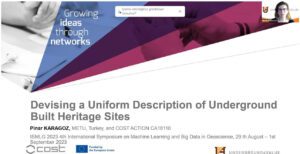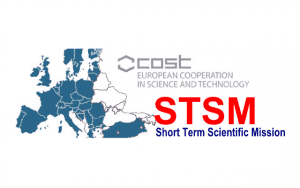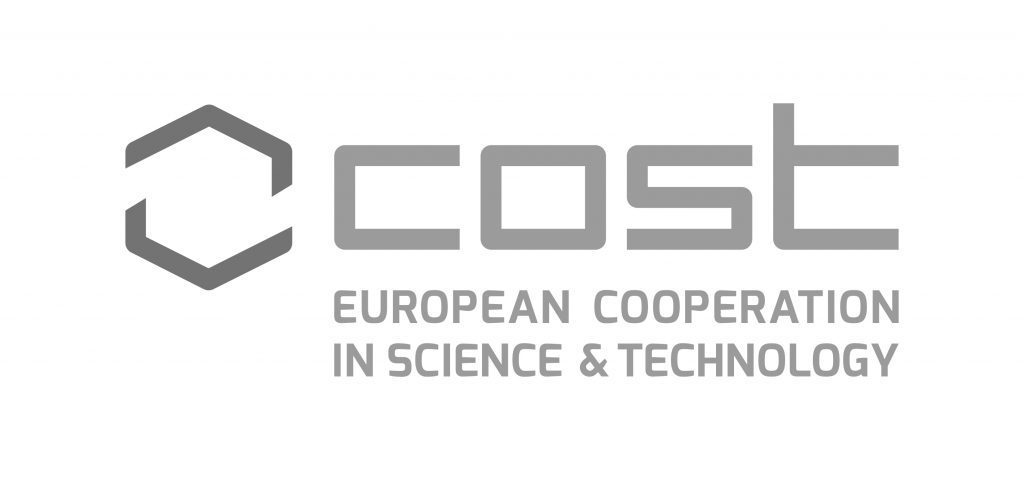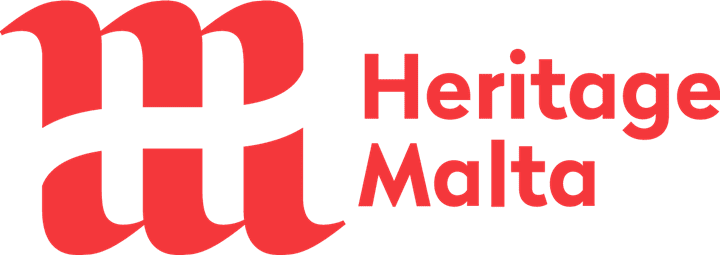Robert Olbrycht
Robert Olbrycht is a Ph.D. fellow from Poland. His reasearch areas are multispectral and hyperspectral thermography, thermographic investigation of civil engineering, optical gas detection and imaging, non-destructive testing using thermal imaging.
After earning a M.Sc. and at Lodz University of Technology in Poland, he has been working there as assistant professor since 2012.
Previously, he worked as independent technical referee and senior technical referee.
Robert’s scientific research counts 19 papers indexed by ISI Web of Science, h-index = 6 and 81 Citations (verified on 22.07.2022 with Web of Science).
He achieved gold medals for the co-authored invention “Optomechatronic method for continuous inspection of an abrasive blasting quality”, international invention exhibitions, 2017 and Awards for scientific and research activity from Rector and Dean of the Faculty of Electrical, Electronic, Computer and Control Engineering.
Riva San Vitale Baptistery
The images below are about a research that Robert Olbrycht did with prof. Francesca Piqué during the STSM during the mapping of painting delaminations in Riva San Vitale Baptistery. It is the most ancient Christian monument still in existence in Switzerland.
The building dates back to the 6th century (500 A.D. +) and was built at what was then ground level, which is below today’s level. Delamination images are obtained with active thermography using lock-in approach.


The STSM entitled Application of stereovision, image processing and thermal imaging – case study in Switzerland” was performed by Robert Olbrycht, who is an assistant professor at Lodz University of Technology, Institute of Electronics in Poland. The STSM was hosted by SUSPI (Scuola Universitaria Professionale della Svizzera Italiana, Dipartimento ambiente costruzioni e design, Istituto materiali e costruzioni) in Mendrisio and supervised by Prof. Francesca Piqué. The mission took place from 12/09/2022 to 17/09/2022 and it involved the following activities:
1. Workstation installation – set up of measurement rig consisting of thermal imaging camera, computer with software for thermal image processing and halogen lamps.
2. Measurements in the laboratory – tests of a panel with known composition and known defects confirmed proper operation of the rig. It was possible to obtain image of the defects in the sample. During the NDT measurements, appropriate frequency of thermal excitation was found, and lock-in approach was selected for further research.
3. Research performed in Riva San Vitale Baptistery (which is below today’s ground level), using the above-mentioned measurement rig. Lock-in approach was used to estimate the delamination distribution in paintings.
4. Presentation of grantee past and present research activities. The presentation included results obtained during laboratory measurements and Riva San Vitale research, as well as technique for improving sightseeing experience in real-time.
5. Measurements on site – a case study in UBH – Cript of St. Stefan at COIRA (underground church). Research included both:
- non-destructive testing (NDT) using very sensitive thermal imaging camera and developed software for site monitoring purposes,
- research with stereovision camera and live image processing for improving visual experience. The algorithm of image processing was adapted for obtaining desired experience in the stereovision goggles.
6. Measurements on site – a case study – under-the-roof Romanesque wall paintings in the church of Sorengo in Lugano. In this case study, the research included the same two aims as in case of Cript of St. Stefan at COIRA.
7. Final meeting to discuss the obtained results and future research possibilities. The STSM achieved its planned goals and expected outcomes:
- the research with thermal imaging camera, computer with software for image processing and halogen lamps enabled estimation of delamination distribution in paintings in Riva San Vitale Baptistery and Cript of St. Stefan at COIRA, as shown in figures 1 – 4,
- appropriate frequency of thermal excitation was found, as well as power of halogen lamps and lock-in approach was chosen for performing the above-mentioned research,
- the algorithm of live image processing from stereovision camera was adapted for obtaining two types of user experience – color realistic and color enriched. This processed image delivered to stereovision googles can improve visual experience during sightseeing of UBH. Exampes of results obtained in St. Stephan Cript are shown in fig. 5 – 7. The results from this STSM (performed case studies – i.a. Riva San Vitale Baptistery, Cript of St. Stefan at COIRA) contribute to the progress towards the Action capacity building objective, by introducing new innovative technologies for the UBH preservation and valorisation and to the U4V Toolbox, that is CA18110 deliverable.

Fig. 1. Riva San Vitale Baptistery

Fig. 2. Measurement rig with thermal imaging camera, halogen lamps and computer

Fig. 3. Left: Paintings in Riva San Vitale Baptistery with marked area of investigation, Right: phase image obtained using lock-in approach with thermal imaging camera, revealing delamination areas

Fig. 4. Left: Paintings in Riva San Vitale Baptistery with marked area of investigation, Right: phase image obtained using lock-in approach with thermal imaging camera, revealing delamination areas

Fig. 5. St. Stephan Cript – Underground Church in Coira

Fig. 6. Left: Area of investigation in St. Stephan Cript. Right: phase image obtained using lock-in approach with thermal imaging camera, revealing delamination area


Fig. 7. Left: Unprocessed image acquired in St. Stephan Cript with the camera. Middle: result of processing with color realistic algorithm. Right: result of processing with color enriched algorithm. Processed images may be displayed to the visitor in stereovision googles for improved sightseeing experience.






